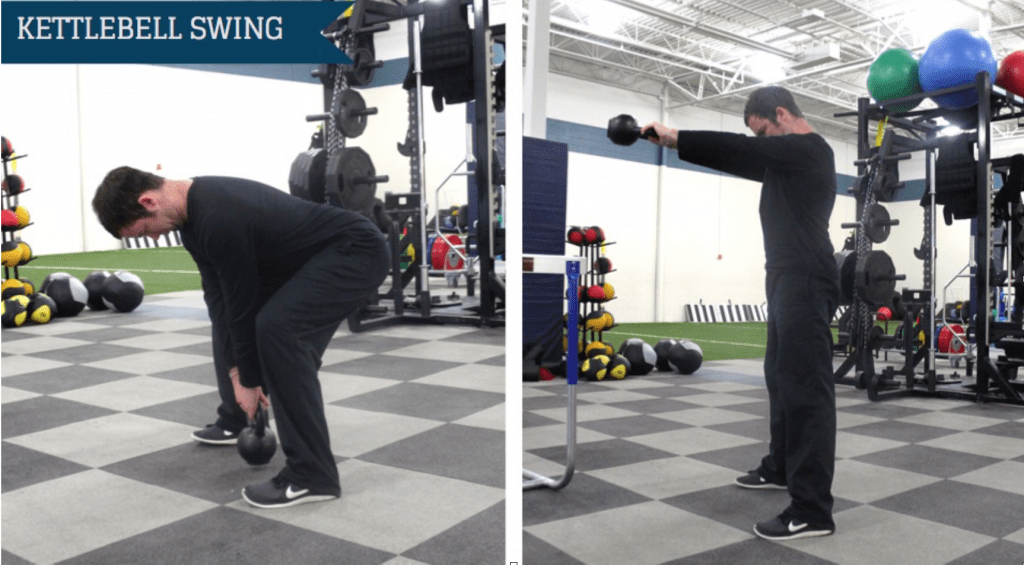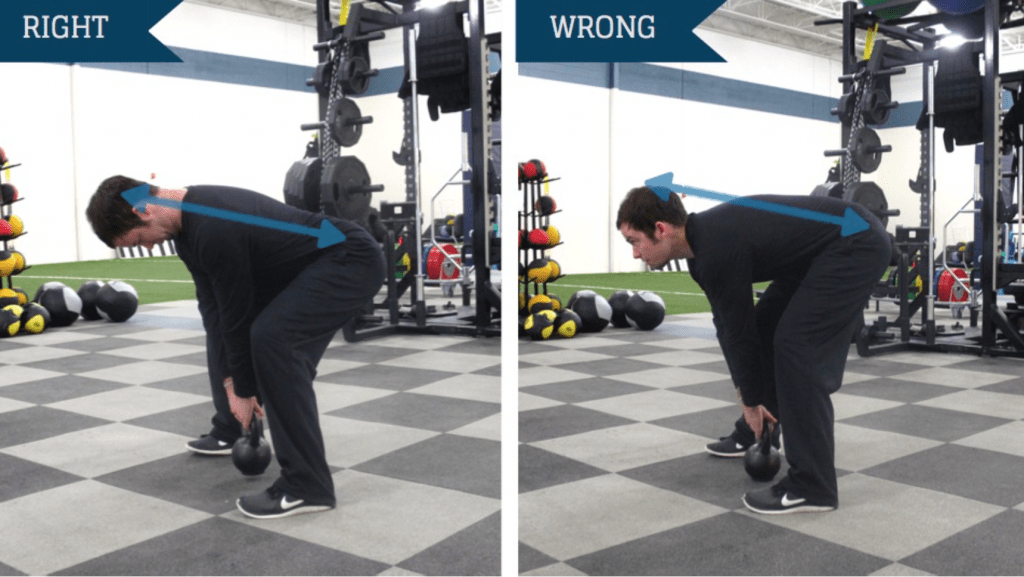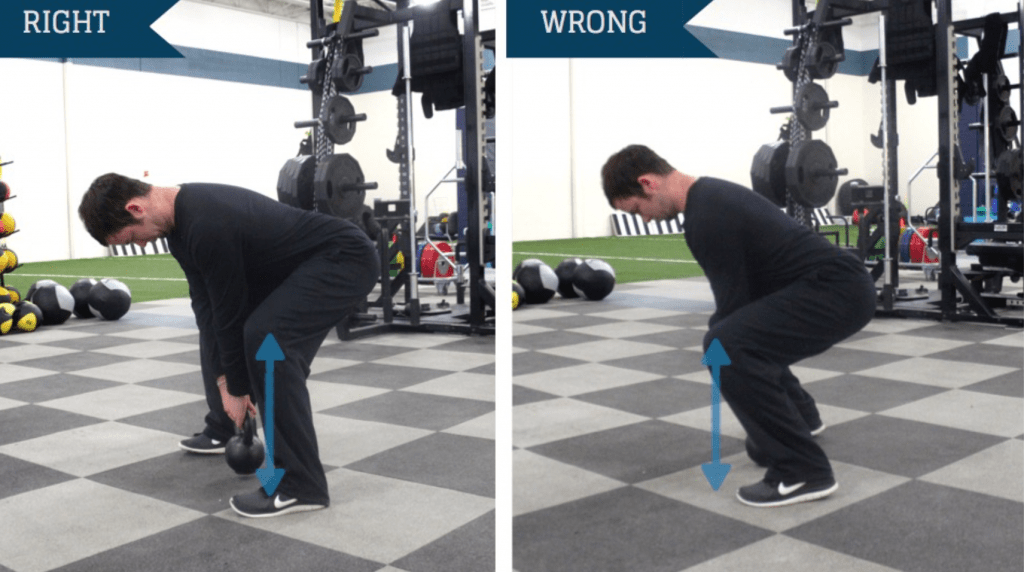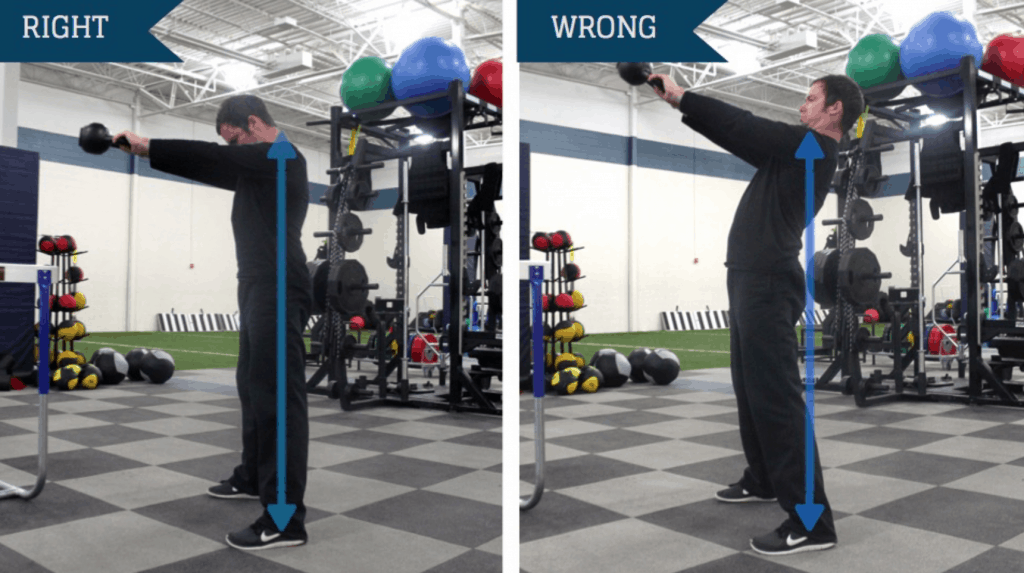Now that we’ve discussed the benefits of kettlebells and the five best exercises for a full-body workout, let’s dive a little deeper into the tool’s most famed exercise – the kettlebell swing.
This is a popular move for a variety of athletes – from youth to adult, beginners to experts, runners to bodybuilders – and for good reason. It works muscle groups in both your lower and upper body, including your hamstrings, glutes, shoulders and core. It can be modified to achieve a cardiovascular workout, getting your heart rate up similar to sprints, or adjusted to focus on building strength.
Either way, correct form and technique is essential for achieving results and avoiding injury. Let’s break it down…

How To Master Swinging A Kettlebell
1. The basics
Stand with your feet slightly wider than shoulder width, with both your toes and knees pointing directly forward. Lower the kettlebell to the ground between your feet while pushing your hips backward.
Imagine that a rope is tied around your waist and someone is directly behind you pulling it backwards. This movement – pushing the hips back – should initiate the the downward motion.
To stand back up, activate your glutes to push your hips forward as you rise, lifting the kettlebell directly in front of you. The weight should not go any higher than parallel to the ground. Sink your hips backward to repeat the motion, keeping your back straight throughout the exercise.
During the exercise, keep your wrists straight. The kettlebell should appear to be a natural extension of your arm. Keep your grip light, but strong enough to keep the weight controlled.

The back: Maintain a straight, neutral spine throughout the exercise. Continue this alignment through the neck with the chin slightly tucked. You back should be pushed forward because your hips are pulled backward, not because you are leaning forward.
Check your back alignment by having someone hold a PVC pipe or foam roller against your spine while performing the exercise. It should touch your entire spine as well as the back of your head and neck.

The squat: With your hips pushed back during the squat, your knees should be directly over your shoelaces. Don’t let them push forward past your toes as this can put added pressure on your knees and lead to injury. Aim to keep the lower half of your leg as upright as possible.
Additionally, make sure your knees don’t cave in or bow out. If you notice your knees caving inward during your set, take a break or stop – this can be a sign of fatigue.

The swing: Again, keep your back in a straight line perpendicular to the ground. Don’t arch your back or push your hips forward in order to swing the kettlebell higher; it shouldn’t go any higher than 90 degrees. Although the exercise is called a “swing”, the movement should be controlled. Flinging the kettlebell can be dangerous and improper form can lead to injury.

Now that you’ve mastered the proper form of the kettlebell swing, incorporate it into either your cardiovascular or strength routine – or both! To build aerobic endurance, use lighter weights with a higher number of reps. Start with sets of 8-12 reps, then increase to 20-25 reps to initiate fat loss. To improve strength and build power, use heavier weights with fewer reps. Depending on the load, aim for sets of 8-12 reps or even 5-8.
The Takeaway
The kettlebell swing is versatile, full-body workout that can be catered to your needs. Use lighter weights to get a cardiovascular workout or grab a heavier kettlebell to focus on improving your strength.
***Are you ready to make this year your healthiest year yet? Get your FREE 5 minute kettlebell workout designed by Russian Kettlebell Coach and fitness expert Pat Flynn so you can get fit, strong and healthy in 2015.
**************
 Jeff Richter, CSCS, USAW, is a strength and conditioning coach, certified through the National Strength and Conditioning Association, at St.Vincent Sports Performance in Indianapolis. For more tips, follow @DefiningSports on Twitter.
Jeff Richter, CSCS, USAW, is a strength and conditioning coach, certified through the National Strength and Conditioning Association, at St.Vincent Sports Performance in Indianapolis. For more tips, follow @DefiningSports on Twitter.
Photo by andrewmalone
